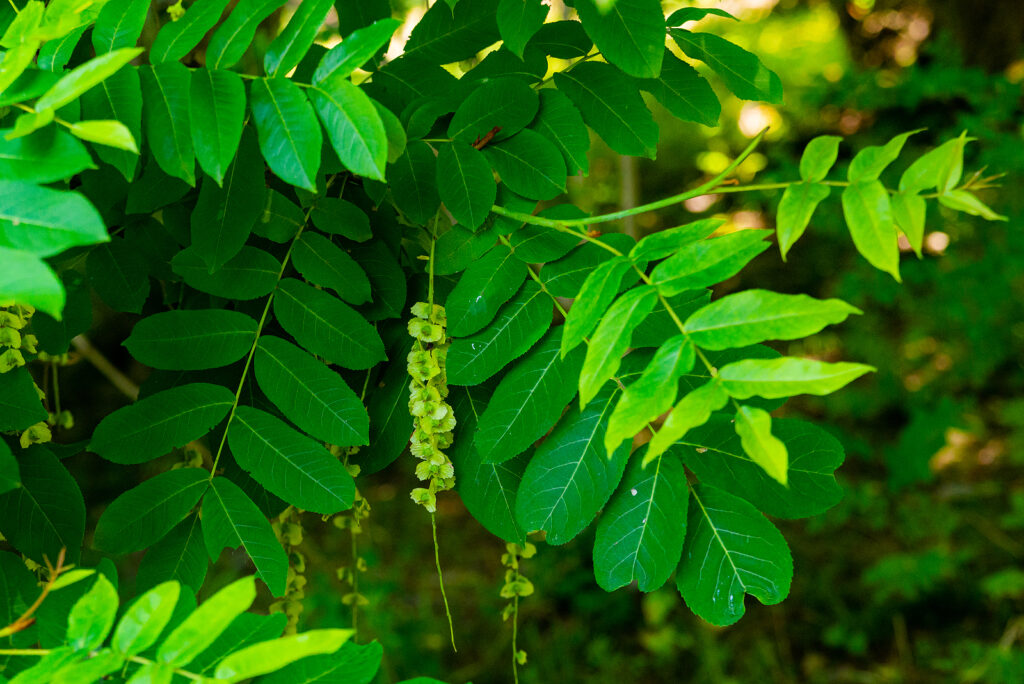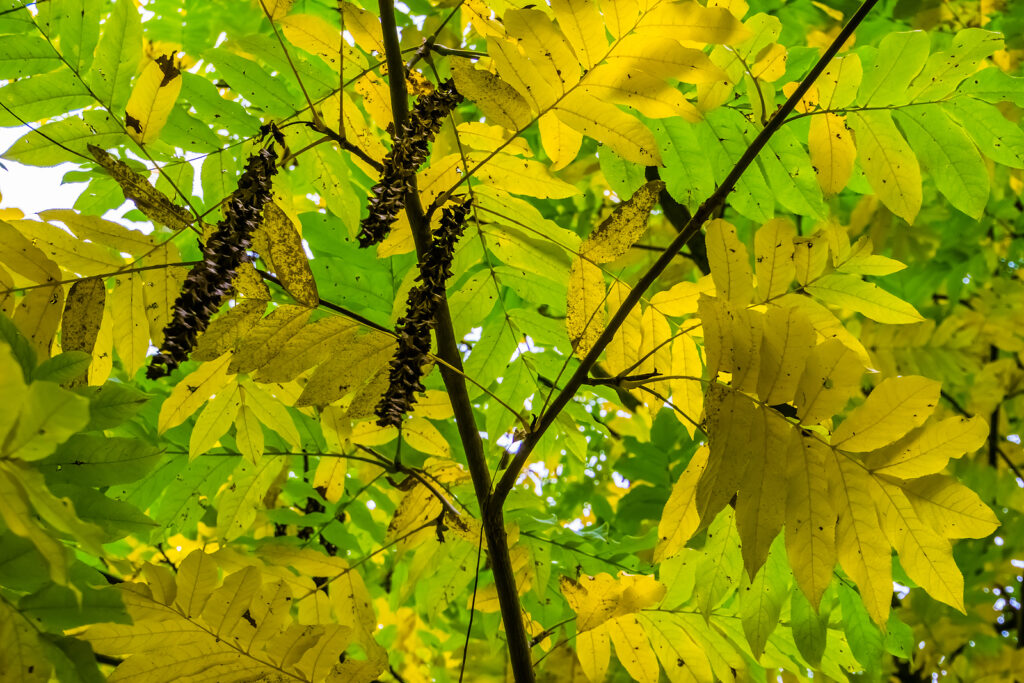Pterocarya–commonly called wingnut–is a heavy, wide-spreading tree that can grow to 80 feet (25m) tall and 70 feet (20m) wide. Pterocarya are best suited for very large gardens or parks.
Pterocarya bears attractive mid-green oblong, pinnate leaves composed of 5 to 27 leaflets. Leaves turn bright yellow in autumn. Inconspicuous small green flowers appear on catkins in spring. The flowers are followed by long, pendent spikes of winged fruits, wingnuts, in autumn.
Pterocarya is a genus of about 10 species of fast-growing deciduous trees. They are native to woodland and riverbanks in the mountains of Asia, from the Caucasus to Japan.

Get to know Pterocarya
- Plant type: Deciduous trees
- Growing zones and range:
- Hardiness:
- Height and width: To 80 feet (25m) tall and 50-70 feet (15-20m) wide
- Growth rate: Fast
- Form and habit: Spreading
- Foliage: Large, 8-12 inches 20-30cm), alternate, more or less oblong, pinnate leaves, composed of 5-27 leaflets, which color yellow in autumn
- Flowers: Inconspicuous green male and female flowers are produced in separate catkins
- Fruits: Foot long (.3m), pendent spikes of single-seeded, winged fruit
- Bloom time: Spring
- Uses: Large gardens or parks, beside a pond or stream
- Garden companions:
- Common name: Wingnuts
- Botanical name: Pterocarya
- Family name: Juglandaceae
- Origin: Asia, from the Caucasus to Japan
Where to plant Pterocarya
- Plant Pterocarya in full sun.
- Plant Pterocarya in deep, fertile, moist, but well-drained soil.
- Pterocarya will tolerate wind, drought and hard soil if the roots are well established.
When to plant Pterocarya
- Sow Pterocarya seed in containers outdoors in autumn.
- Trees bought balled and burlapped—that is, with their roots in their original soil ball wrapped in burlap—should be planted in spring.
Planting and spacing Pterocarya
- Plant Pterocarya 50-70 feet (15-20m) apart.
How to water and feed Pterocarya
- Give Pterocarya regular to little water.
- Feed Pterocarya with an all-purpose organic fertilizer in spring.

How to care for Pterocarya
- Remove unwanted suckers as they appear.
- Prune Pterocarya in summer to prevent the bleeding that occurs when cuts are made in winter or spring.
- Pterocarya have a tendencyto develop more than one trunk or to have several low branches unless trained by being pruned.
Pterocarya pests and diseases
- Pests and diseases are infrequent.
Pterocarya propagation
- Remove rooted suckers in autumn.
Pterocarya varieties to grow
- Pterocarya fraxinifolia, Caucasian wingnut, vigorous, spreading tree bearing pinnate leaves, to 16 inches (40cm) long, with cylindrical midribs; the leaves are composed of 23 or more, oblong to ovate, glossy, dark green leaflets. Small, winged green fruit are produced in pendent spikes, to 20 inches (50cm) long, in summer. To 80 feet (25m) tall and 70 feet (20m) wide. Caucasus, North Iran.
- P. stenoptera, Chinese wingnut, spreading tree with pinnate leaves, to 16 inches (40cm) long, with winged midribs; the leaves consist of up to 21oblong, bright green leaflets, the terminal leaflet often absent. Small, winged green fruit are produced in pendent spikes, to 12 inches (30cm) long, in summer. To 80 feet (25m) tall and 50 feet (15m) wide. China.















